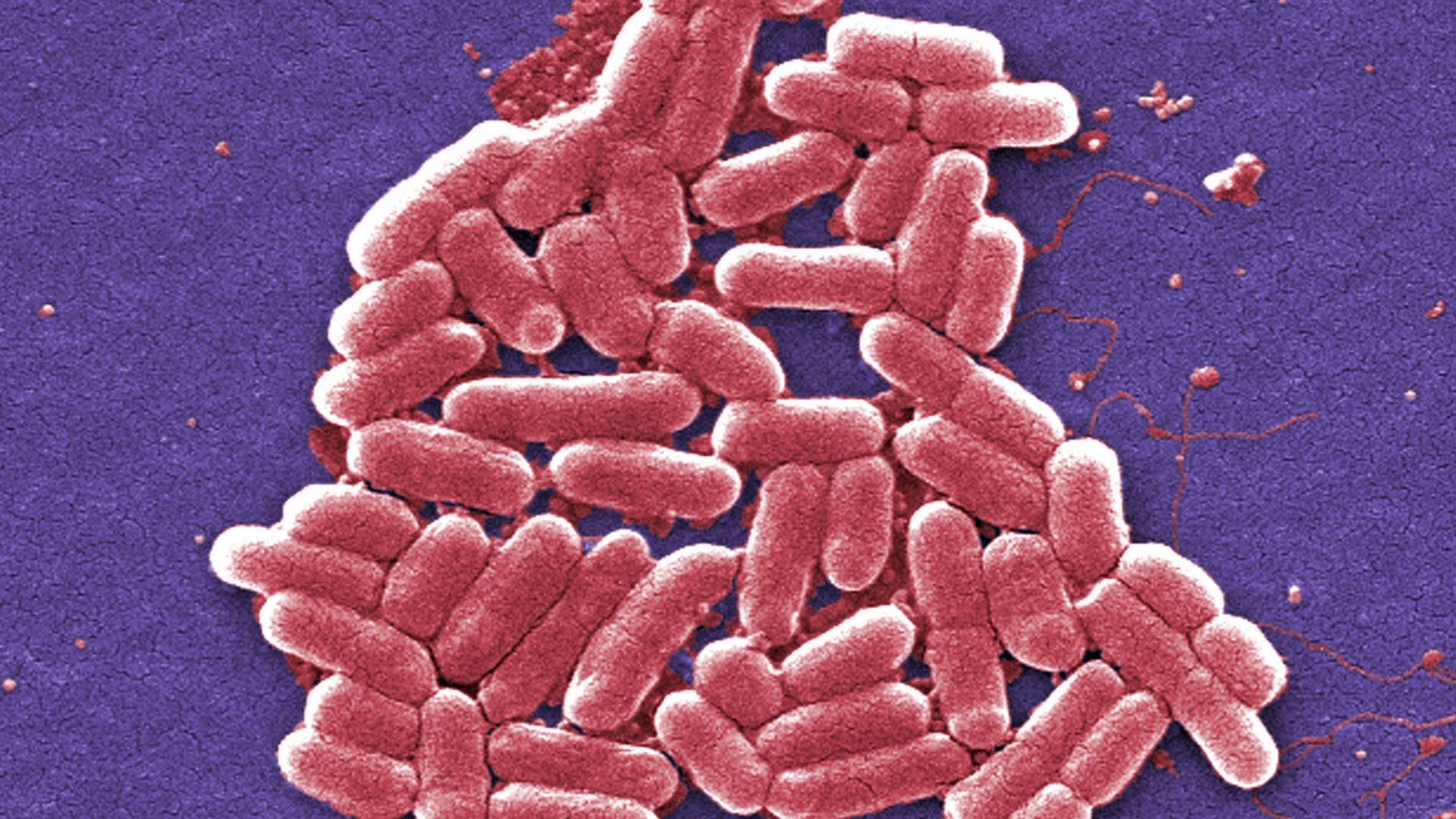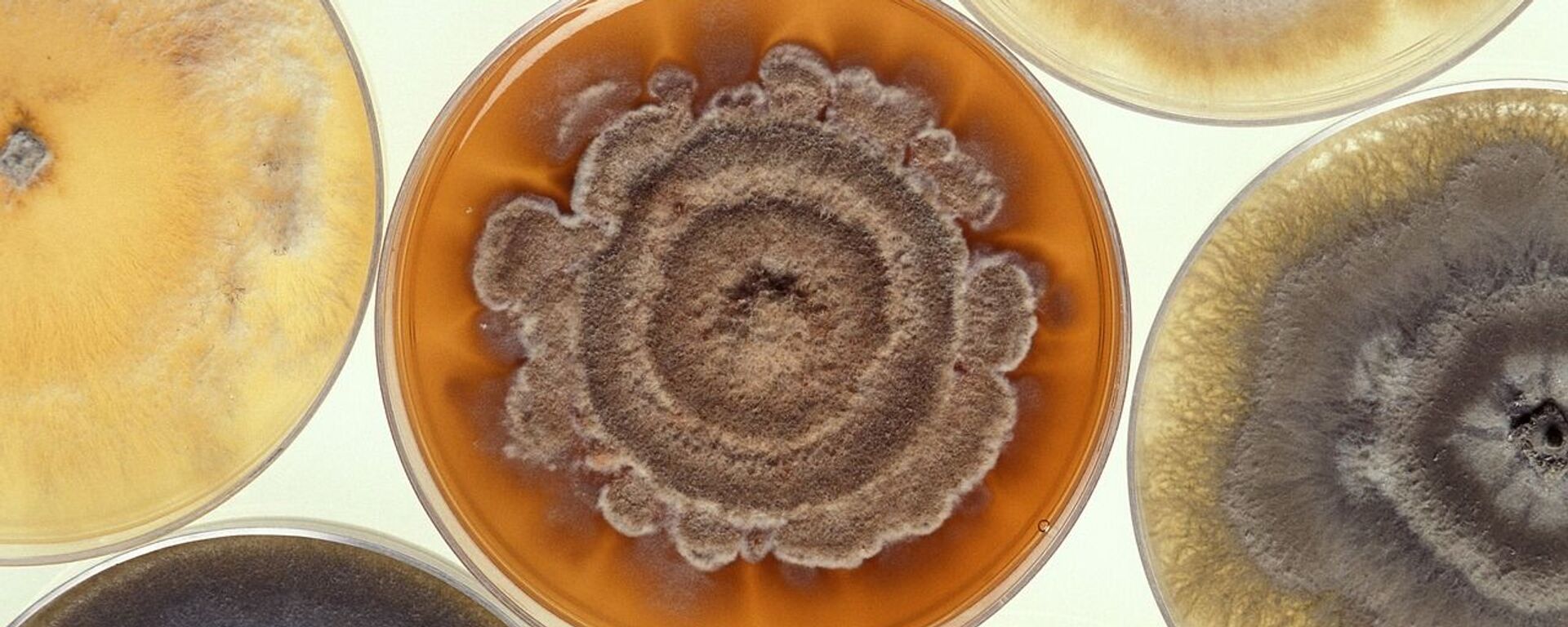https://sputnikglobe.com/20220420/science-let-us-hear-bacteria-but-why-is-it-so-vital-1094913775.html
Science Let Us Hear Bacteria, But Why Is It So Vital?
Science Let Us Hear Bacteria, But Why Is It So Vital?
Sputnik International
Experiments on “listening to” bacteria’s movement will almost certain raise many eyebrows, but scientists seem to remain optimistic. They claim that... 20.04.2022, Sputnik International
2022-04-20T13:40+0000
2022-04-20T13:40+0000
2022-04-20T13:40+0000
bacteria
study
experiment
research
graphene
scientists
https://cdn1.img.sputnikglobe.com/img/107388/76/1073887616_0:143:2453:1523_1920x0_80_0_0_9cd4bbadf8c473f90fedb67c22cb0c32.jpg
Have you ever heard what a bacteria symphony could sound like? Dutch scientists have managed to record “the sound of a single bacterium” with the help of a so-called graphene drum.The results of a study conducted by researchers from the Delft University of Technology in the Netherlands were published in the journal Nature Nanotechnology. Using an ultra-thin bilayer membrane of graphene, which is sometimes referred to as a “wonder material” for it’s super sensitive to stimulation helped scientists "listen" to the sound of the E. coli bacteria moving all by itself in the water. Such a type of bacteria typically lives in the intestines of healthy people and animals.Cees Dekker, a researcher at the Delft University of Technology and co-author of the study, said in a statement that what the scientists saw “was striking”.According to Dekker, the researchers actually heard the sound of bacteria tails, or flagella, interacting with the graphene drum and producing back-and-forth movements called oscillations. Such oscillations generate vibrations on the material's surface, and the scientists converted all this into noise that they managed to record.“Yet, these nanoscale beats can be converted to soundtracks and listened to - and how cool is that”, Alijani added.Many may scratch their heads and wonder whether this study is insignificant and needed just for fun. No way, the researchers say, stressing that the experiment is vital for developing modern medical science.During the experiment, the scientists saw that if bacteria were resistant to an antibiotc, their beats would continue, but of microorganisms were susceptible to the medication, the “song” faded until it was completely gone.He underlined that in the future, researchers plan to optimise their “single-cell graphene antibiotic sensitivity platform” and validate it against “a variety of pathogenic samples so that eventually, it can be used as an effective diagnostic toolkit for fast detection of antibiotic resistance in clinical practice”.
https://sputnikglobe.com/20210327/scientists-find-bacteria-so-alien-to-human-immune-system-it-cant-detect-it-1082467237.html
Sputnik International
feedback@sputniknews.com
+74956456601
MIA „Rossiya Segodnya“
2022
Oleg Burunov
https://cdn1.img.sputnikglobe.com/img/07e4/09/0b/1080424846_0:0:2048:2048_100x100_80_0_0_3d7b461f8a98586fa3fe739930816aea.jpg
Oleg Burunov
https://cdn1.img.sputnikglobe.com/img/07e4/09/0b/1080424846_0:0:2048:2048_100x100_80_0_0_3d7b461f8a98586fa3fe739930816aea.jpg
News
en_EN
Sputnik International
feedback@sputniknews.com
+74956456601
MIA „Rossiya Segodnya“
Sputnik International
feedback@sputniknews.com
+74956456601
MIA „Rossiya Segodnya“
Oleg Burunov
https://cdn1.img.sputnikglobe.com/img/07e4/09/0b/1080424846_0:0:2048:2048_100x100_80_0_0_3d7b461f8a98586fa3fe739930816aea.jpg
bacteria, study, experiment, research, graphene, scientists
bacteria, study, experiment, research, graphene, scientists
Science Let Us Hear Bacteria, But Why Is It So Vital?
Experiments on “listening to” bacteria’s movement will almost certain raise many eyebrows, but scientists seem to remain optimistic. They claim that researching such “a sonata” may help doctors delve into antibiotics-related treatment.
Have you ever heard what a bacteria symphony could sound like? Dutch scientists have managed to record “the sound of a single bacterium” with the help of a so-called graphene drum.
The results of a study conducted by researchers from the Delft University of Technology in the Netherlands were published in the journal Nature Nanotechnology.
Using an ultra-thin bilayer membrane of graphene, which is sometimes referred to as a “wonder material” for it’s super sensitive to stimulation helped scientists "listen" to the sound of the E. coli bacteria moving all by itself in the water. Such a type of bacteria typically lives in the intestines of healthy people and animals.
Cees Dekker, a researcher at the Delft University of Technology and co-author of the study, said in a statement that what the scientists saw “was striking”.
According to Dekker, the researchers actually heard the sound of bacteria tails, or flagella, interacting with the graphene drum and producing back-and-forth movements called oscillations. Such oscillations generate vibrations on the material's surface, and the scientists converted all this into noise that they managed to record.
Another co-author of the research, Farbod Alijani, stressed that “to understand how tiny these flagellar beats on graphene are, it's worth saying that they are at least 10 billion times smaller than a boxer's punch when reaching a punch bag”.
“Yet, these nanoscale beats can be converted to soundtracks and listened to - and how cool is that”, Alijani added.
Many may scratch their heads and wonder whether this study is insignificant and needed just for fun. No way, the researchers say, stressing that the experiment is vital for developing modern medical science.
During the experiment, the scientists saw that if bacteria were resistant to an antibiotc, their beats would continue, but of microorganisms were susceptible to the medication, the “song” faded until it was completely gone.
Peter Steeneken, one more co-author of the study, pointed out in this regard that the experiment “would be an invaluable tool in the fight against antibiotic resistance, an ever-increasing threat to human health around the world”.
He underlined that in the future, researchers plan to optimise their “single-cell graphene antibiotic sensitivity platform” and validate it against “a variety of pathogenic samples so that eventually, it can be used as an effective diagnostic toolkit for fast detection of antibiotic resistance in clinical practice”.



